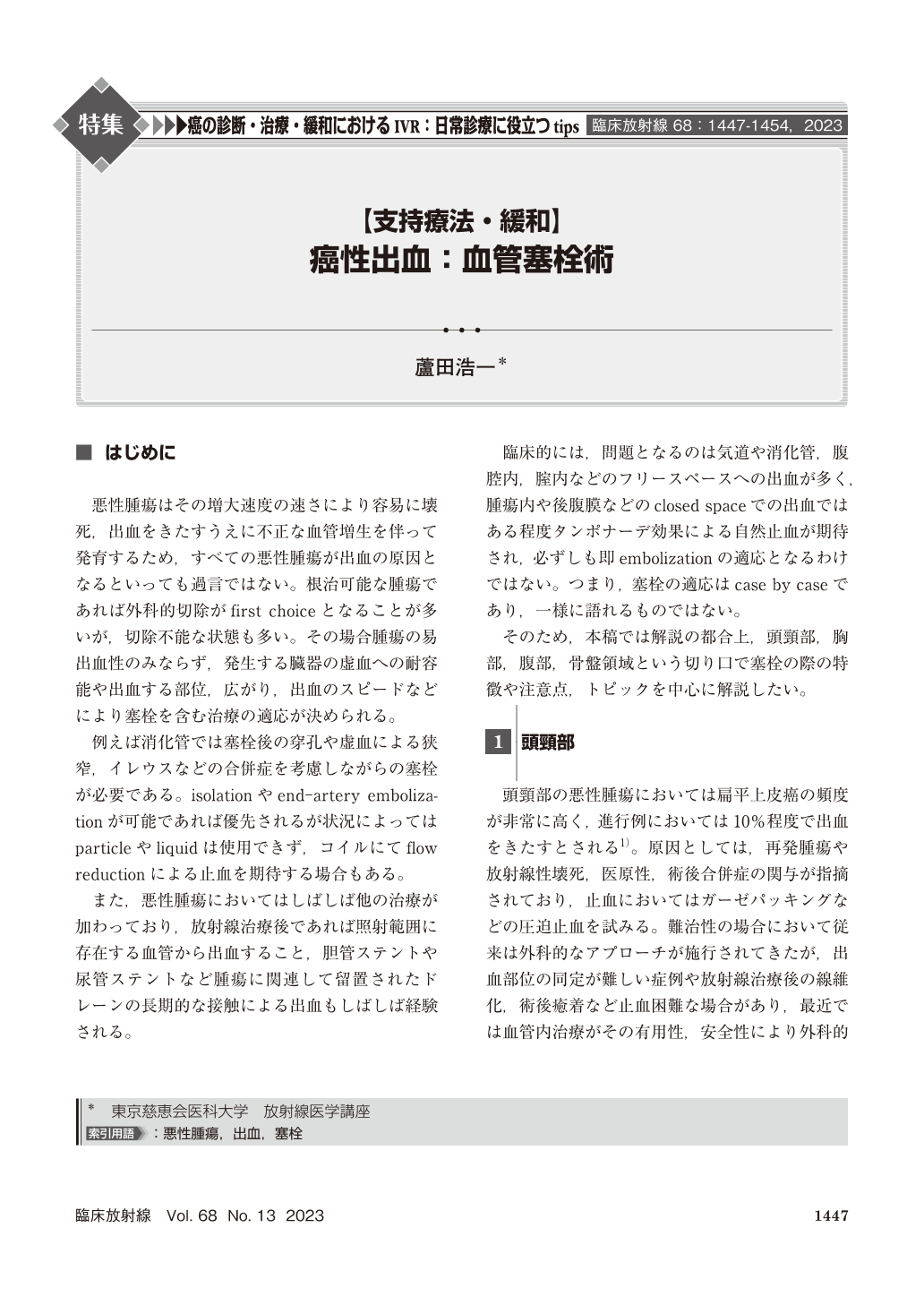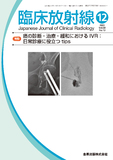Japanese
English
- 有料閲覧
- Abstract 文献概要
- 1ページ目 Look Inside
- 参考文献 Reference
悪性腫瘍はその増大速度の速さにより容易に壊死,出血をきたすうえに不正な血管増生を伴って発育するため,すべての悪性腫瘍が出血の原因となるといっても過言ではない。根治可能な腫瘍であれば外科的切除がfirst choiceとなることが多いが,切除不能な状態も多い。その場合腫瘍の易出血性のみならず,発生する臓器の虚血への耐容能や出血する部位,広がり,出血のスピードなどにより塞栓を含む治療の適応が決められる。
It is no exaggeration to say that all malignant tumors cause hemorrhage because of their rapid growth rate, which easily leads to necrosis and hemorrhage, and also because they grow with irregular vascular growth. Surgical resection is often the first choice if the tumor is curable, but there are many cases in which the tumor is not resectable. In such cases, the indication for treatment, including embolization, depends not only on the tumor’s susceptibility to bleeding, but also on the ability of the organ to withstand ischemia, the site of bleeding, the extent of bleeding, and the speed of bleeding. In addition, malignant tumors are often treated with other therapies, which often result in hemorrhage. Clinically, bleeding into free spaces such as the airway, gastrointestinal tract, abdominal cavity, or vagina is the most common problem, while bleeding into the tumor or into the retroperitoneum in a closed space is expected to hemostat itself to some extent by the tamponade effect, and is not necessarily an immediate indication for embolization. In other words, indications for embolization are case by case, and cannot be stated uniformly. In this article, we will focus on the characteristics, precautions, and topics related to embolization in the head and neck, chest, abdomen, and pelvic regions.

Copyright © 2023, KANEHARA SHUPPAN Co.LTD. All rights reserved.


